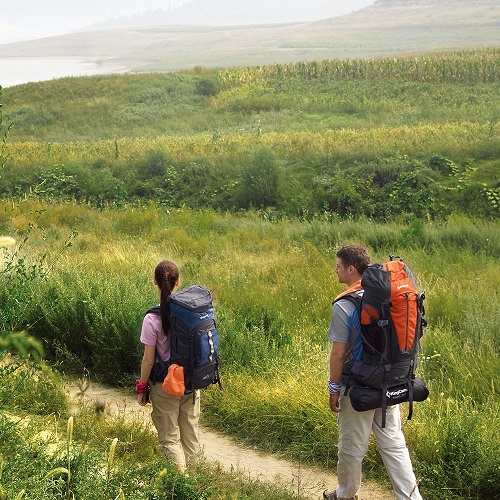Strong comprehensive service capability: Amazon TOP10 brands supplier, perfect quality control system.Fast proofing: 2 days for regular proofing, 6 days for custom proofing

For hiking, it is natural to bring outdoor equipment! Among them, the backpack is indispensable, which can effectively help us to store things. But how much volume of backpack should I choose? How to pack the items? KingCamp answers one by one!
1. Choose a backpack according to the type of activity
1. If you want to camp on foot, that is, if you need to walk to the camping site for a long time with tents, sleeping bags, mats, etc., and spend one or several nights in the wild, then you have to choose-45L or more to reload on foot backpack.
Due to the long-term load-bearing hike and the carrying of equipment such as tents, sleeping bags, mats, cooking utensils, tableware, water, personal belongings, etc., the backpack is required to carry high support strength, strong bearing capacity, large volume, and more external hangers, suitable for high strength And professional outdoor sports.

Waist bags below 10L are mostly used with large hiking backpacks! It is light and easy to carry, and is mainly used to carry valuable items with you.
You can put your equipment in a large backpack, and put your valuables in your waist bag and carry it with you.
2. If it is a single-day round trip, but needs to hike for 5-8 hours, you should choose a 30-45L trekking backpack.
Such activities need to carry a certain amount of food, drinking water, sunscreen products, spare clothing, etc. Although the weight is not very large, but because of the long walking time, the backpack has a high requirement for carrying support ability, so choose a moderate volume. The body design is simple and light, and the backpack compartment is functionally divided and the designed backpacks are stored separately.

2. How to pack effectively? (Mainly suitable for large hiking backpacks)
How to load a backpack to hold more luggage and make the journey easier? KingCamp introduces a few tips?
Keep heavier objects close to your back, balance the backpack left and right, with the center of gravity between your shoulders.
Put large and sharp items first, such as cookware, stove top, etc., fill both sides with soft items, such as towels, sleeping bags, clothing, etc., to ensure that every space is used;
Do not lean against hard objects close to the back, otherwise it will easily hit the back and affect comfort;
Put commonly used items on the backpack, such as headlights, maps, hats, towels, compasses, Swiss knives, etc., and it is best to pack them separately to avoid the situation that a large number of small things fall out when the bag is opened.
Traveling on ordinary mountain roads, you can put heavier items on the upper layer of the main compartment of the backpack, which helps to concentrate the strength on the hips, which is the part of the body that can bear the heavier burden.
If you are walking on a rugged and difficult expedition road, you should put heavier items in the middle of the main compartment of the backpack, so that the weight can be distributed to the shoulders and back, so that the center of gravity is lowered and it is easier to maintain balance.
Tighten all compression straps to limit the sliding of the equipment in the backpack to prevent the center of gravity of the backpack from moving and causing people to lose their balance.
The items tied to the backpack should be as few as possible, otherwise it will affect the balance when traveling.